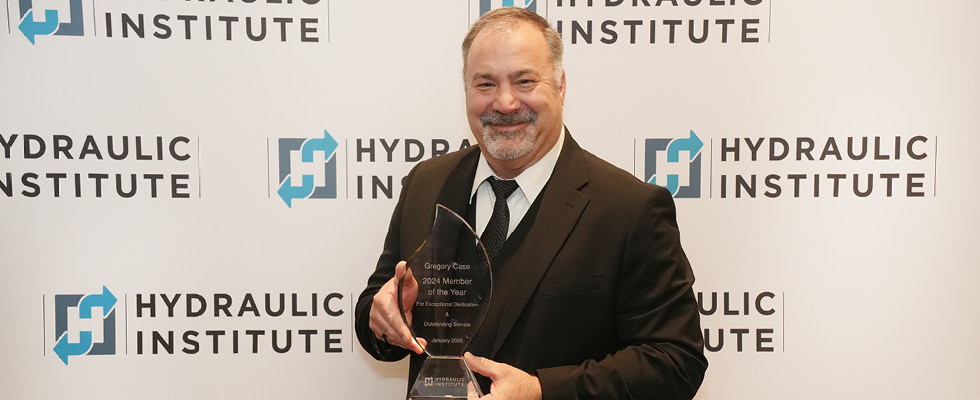
The Pumps & Systems Editorial Advisory Board is our trusted resource for advice on industry trends and technical guidance. Who are the board members? While you can find the full list in the table of contents of our digital or print issue, we wanted to take some time throughout the year to introduce you to our valued advisors. We’re kicking things off with one of our newest members and the recent winner of one of the top prizes at the Hydraulic Institute’s Annual Conference, Gregory Case.
Congrats on Hydraulic Institute Member of the Year! How did it feel to take that award home?
Shocking! Truly unexpected.
I must say I am deeply honored. I have been a Hydraulic Institute member on and off since 1992. I have seen many of the industry’s best walk up to receive this award. I am not sure I am worthy to be counted among them, but I am honored that HI felt I am worthy.
Can you tell us a little bit about your career and what your current position entails?
I’ve held various roles in the pump industry, from sales to manufacturing management, but I always return to engineering. I’ve worked for small companies, ran my own consultancy for 16 years, and joined Taco, Inc., about 10 years ago. Now, as chief innovation officer, I leverage all my past experiences. My focus is on long-term growth strategies (5-10 years), identifying necessary technologies, future products and the skills our workforce will need. How and where will we make these products? That’s what I’m here to figure out.
What excites you most about the current direction of the industry? Concerns?
For me the most exciting development in the pump industry right now is the integration of software and electronics into pump drive systems. Smart devices offer incredible possibilities for energy savings, predictive maintenance and enhanced communication/control—revolutionizing how pumps are purchased, operated and serviced.
My biggest concern is the loss of knowledge as baby boomers retire. It’s crucial for early-career employees to capture the experience and expertise of this generation before they leave the workforce. Despite all the new tools and features, pumps still operate on fundamental principles that must be deeply understood to keep the industry running smoothly.
What is a project or accomplishment you’re most proud of in your career?
I’ve been incredibly fortunate in my career, collaborating with amazing people on some fantastic projects. One standout achievement was completing the first Department of Energy (DOE) Efficiency Rulemaking for Commercial/Industrial Pumps.
Selected by HI to represent the industry, I worked alongside HI company members in D.C. to develop a practical energy efficiency regulation. In a short time, we created a workable methodology and united a deeply divided group of manufacturers to support the regulation.
What do you enjoy most about working in this industry?
The pump industry is incredibly diverse, impacting every aspect of modern life. I’ve designed pumps for a wide range of industries, including spacecraft, trains, LNG ships, nuclear power plants, petroleum and chemical processing, semiconductor manufacturing and traditional water pumps. Each project has provided me with valuable insights into these different fields.
What advice would you give to someone new to this field?
Be open to opportunities. When they arise, seize them and trust in your ability to succeed.
What’s something you like to do outside of work?
I’m an avid woodworker. Building furniture or cabinets allows me to work with my hands and create something I am generally proud of in a relatively short period of time. Corporate projects generally have longer timelines, and that sense of satisfaction is long awaited.

